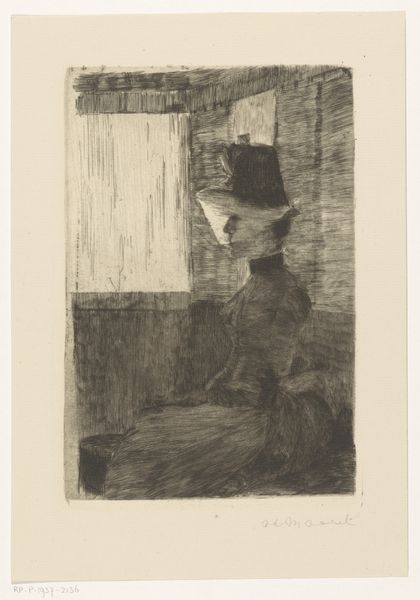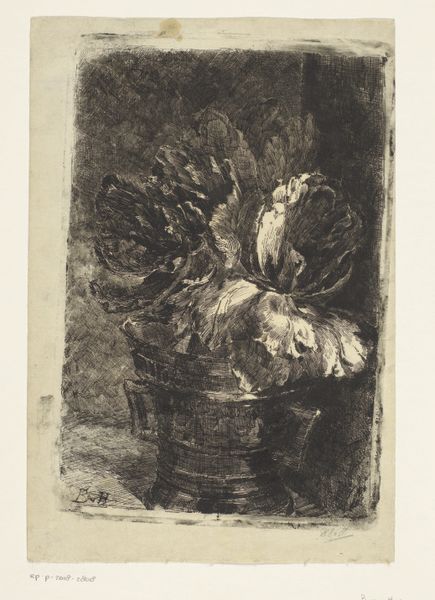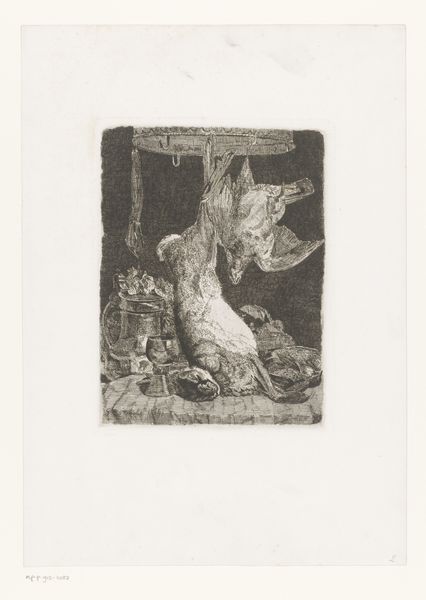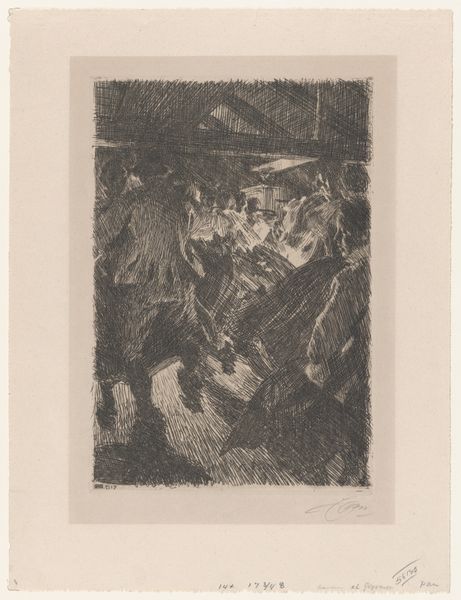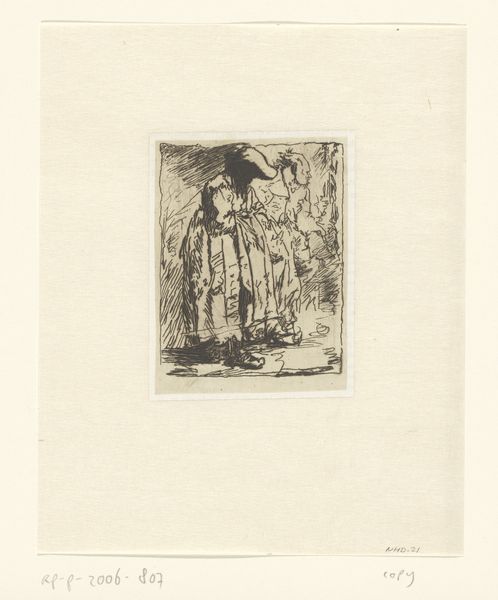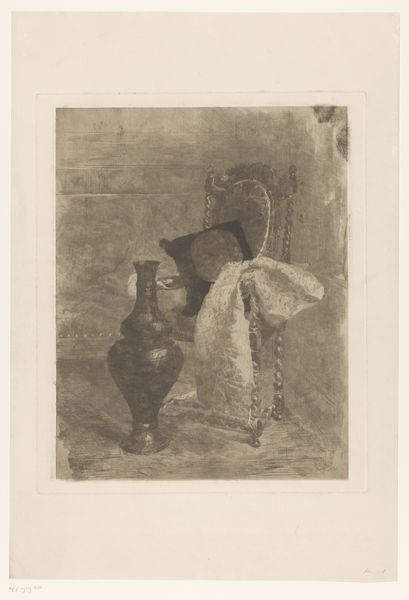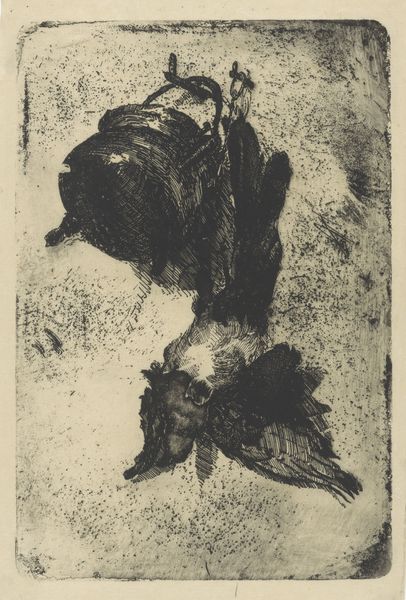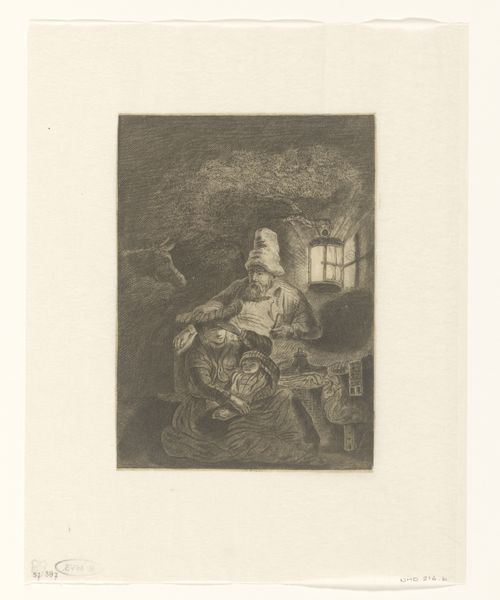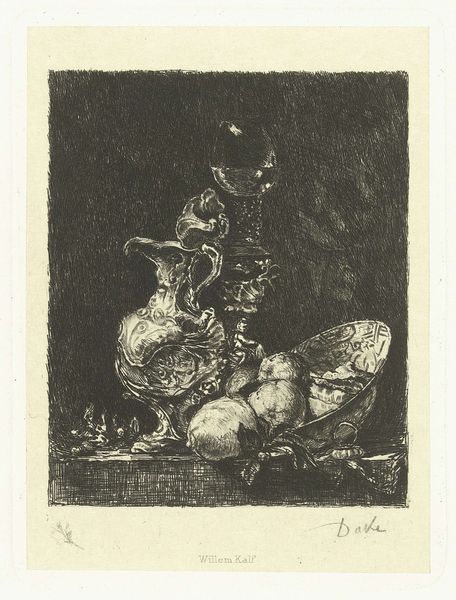
Dimensions: height 416 mm, width 280 mm
Copyright: Rijks Museum: Open Domain
Carel Nicolaas Storm van 's-Gravesande made this etching, "Vase with Roses on a Table," using metal, acid, and ink. The velvety blacks and subtle grays weren't achieved with paint, but through the labor-intensive process of etching. The artist would have covered a metal plate with a waxy ground, then drawn through it to expose the metal. When dipped in acid, the exposed lines would bite into the plate. This process could be repeated multiple times to achieve darker tones. Like a photograph, etching had a complex relationship to the burgeoning world of industrial reproduction. It allowed for the creation of multiple original prints. Each one required careful inking and printing, a skillful practice in itself. The artist would have had to consider how much pressure to apply to achieve the desired effect. So, while seemingly a simple still life, this print reveals a complex intersection of artistic skill, craft, and technology in the late 19th century. It blurs the lines between fine art and the wider world of production.
Comments
No comments
Be the first to comment and join the conversation on the ultimate creative platform.



